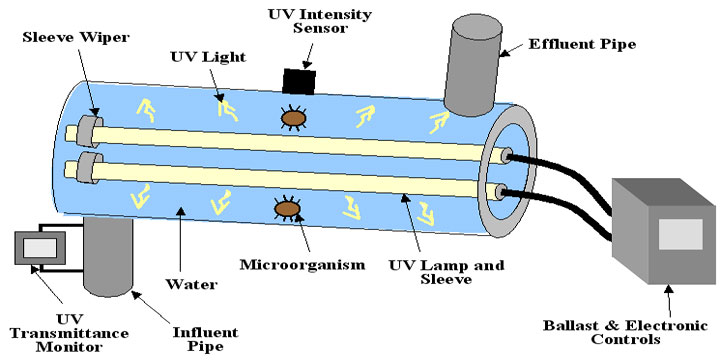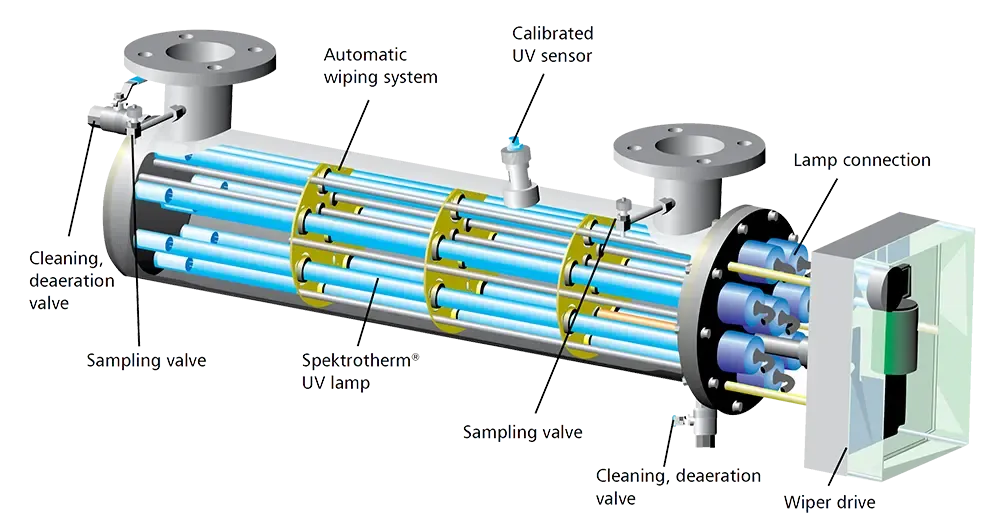A typical UV water disinfection system comprises essential components, including a UV reactor chamber, control panel, UV monitoring system, and automatic wiper system. The UV reactor chamber, constructed from robust stainless steel, holds and disinfects water using UV-C lamps. The chamber’s design, with integrated baffles and flow diverters, ensures optimal water flow for effective UV exposure.

Control Panel and Monitoring System:The control panel serves as the central hub in the UV water disinfection system, facilitating monitoring and control.
System Monitoring: Displays UV intensity, dose, flow rate, and operating temperature for operators to assess system performance.
UV Intensity Monitoring: Utilizes UV sensors to measure real-time intensity, crucial for ensuring sufficient UV dose for effective disinfection.
Lamp Life Tracking: Monitors operating hours of UV lamps, alerting operators when replacement is needed.
System Control: Allows system activation, adjustment of UV dose rate, and other functions, with some systems offering automatic adjustments for optimal performance.
Alarm System: Alerts operators to issues such as reduced UV dose, lamp failure, or abnormal flow rate, preventing ineffective disinfection.
Data Logging: Some control panels log performance data (e.g., UV intensity and flow rate) over time, aiding in record-keeping, performance tracking, and issue identification.
UV Monitoring System: This system verifies the administered UV dose, ensuring the accurate delivery of the required dose for effective disinfection.

Automatic Wiper System: The automatic wiper system is crucial for maintaining optimal UV performance. It cleans quartz tubes housing UV lamps to prevent surface coating with scale, biofilm, or other substances present in water or wastewater. This coating can reduce UV light passage, leading to decreased UV dose and disinfection effectiveness. The automatic wiper system periodically wipes UV lamp surfaces, ensuring a consistently sufficient UV dose.
The necessity of an automatic wiper system depends on water quality. In instances of high hardness, turbidity, or substances that may coat lamps, an automatic wiper system proves particularly beneficial. Conversely, in relatively clean water, the need for an automatic wiper system may be less pronounced. The comprehensive integration of these components ensures the UV water disinfection system’s effectiveness and reliability in various water treatment scenarios.

Leave A Comment